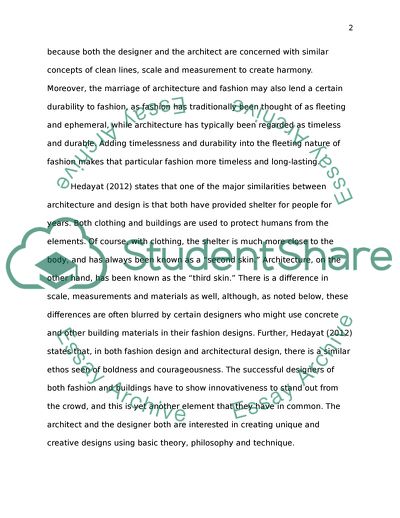Cite this document
(Fashion Design and Architecture - Intersections and Differences Literature review Example | Topics and Well Written Essays - 4500 words, n.d.)
Fashion Design and Architecture - Intersections and Differences Literature review Example | Topics and Well Written Essays - 4500 words. https://studentshare.org/design-technology/1796281-title-the-relationship-between-fashion-and-architecture
Fashion Design and Architecture - Intersections and Differences Literature review Example | Topics and Well Written Essays - 4500 words. https://studentshare.org/design-technology/1796281-title-the-relationship-between-fashion-and-architecture
(Fashion Design and Architecture - Intersections and Differences Literature Review Example | Topics and Well Written Essays - 4500 Words)
Fashion Design and Architecture - Intersections and Differences Literature Review Example | Topics and Well Written Essays - 4500 Words. https://studentshare.org/design-technology/1796281-title-the-relationship-between-fashion-and-architecture.
Fashion Design and Architecture - Intersections and Differences Literature Review Example | Topics and Well Written Essays - 4500 Words. https://studentshare.org/design-technology/1796281-title-the-relationship-between-fashion-and-architecture.
“Fashion Design and Architecture - Intersections and Differences Literature Review Example | Topics and Well Written Essays - 4500 Words”. https://studentshare.org/design-technology/1796281-title-the-relationship-between-fashion-and-architecture.


